At the end of the 19th century, Christmas gifts could be sourced from bazaars and shops in the city centre, and Christmas fairs were also popular. A fair was always held on the square in front of the old City Hall – next to the Inner City Parish Church – at the Pest end of Erzsébet Bridge. The stalls were mainly lined with gifts for children: rocking horses, trumpets, toy soldiers, drums, dolls, dollhouse furniture and sweets. The city would fill to the brim in the Advent period.
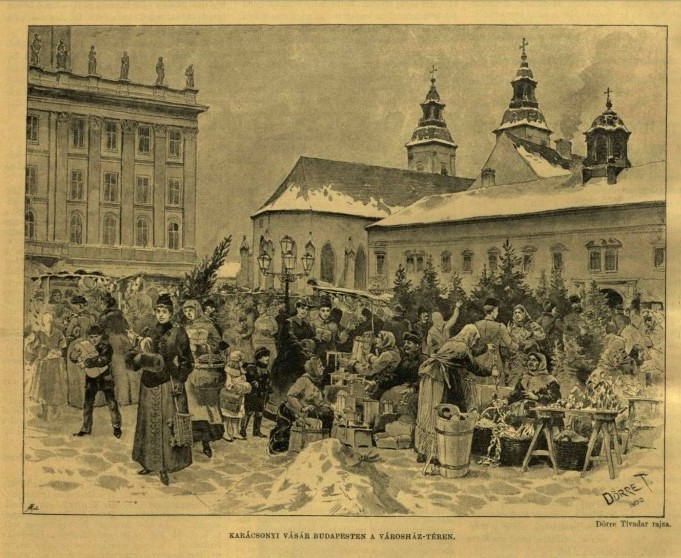
Christmas Market on Városháza Square with the Inner City Parish Church in the background
(Source: Vasárnapi Ujság, 21 December 1890)
The 24 December 1899 issue of Vasárnapi Ujság describes the Christmas market as follows: “In larger cities, and especially in true metropolises, the revenue of a "Christmas market" reaches almost fantastical sums. Numerous workshops and factories work for months to meet the demands of the Christmas market and, with the working with artists, produce goods that improve year on year to meet the demand for increasingly sophisticated artwork beyond everyday needs." Beyond shopping, the affluent also thought of the less privileged and supported the poor through charities and foundations.

Christmas market next to the Customs House (Source: Vasárnapi Ujság, 26 December 1897)
The correspondent of the contemporary newspaper depicts the "merry fair" in an idyllic picture. While there may not be a stand of roasting meat, nor carolers, there is a smile on every face, filled with gentle and calm joy. “The happiest marker in the world is the Christmas fair because everyone, even the poorest, visits them not to buy household goods and things for everyday life, but to purchase pure joy. The child of the street cleaner is as overjoyed by the site of the Christmas tree and the few chestnuts hanging on it, and the small ragdoll gifts, as is the child of counts surrounded by artificial and expensive toys and trinkets," – claims a report in the 24 December 1871 issue of Vasárnapi Ujság.
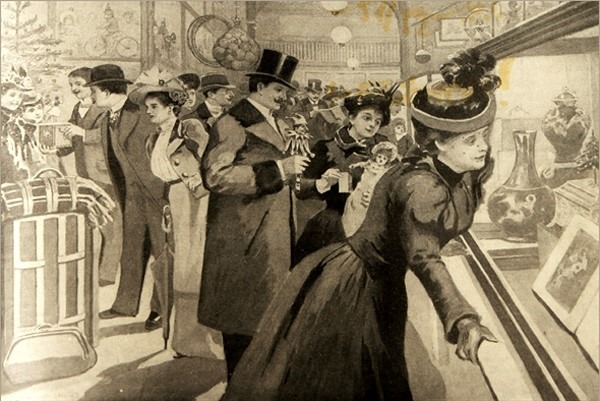
Choosing presents in a shop in Budapest (Source: Vasárnapi Ujság, 21 December 1902)
A lot was happening on the street in the city centre in 1897, according to Vasárnapi Ujság: "Christmas goods have been on sale for weeks. Shop windows have been redecorated and made to shine. People walk the streets with packages of various sizes. Porters carry rocking horses and drums.” Shoppers moved in waves along the boulevards to admire the illuminated, colourful shop windows in the early dark of winter days.
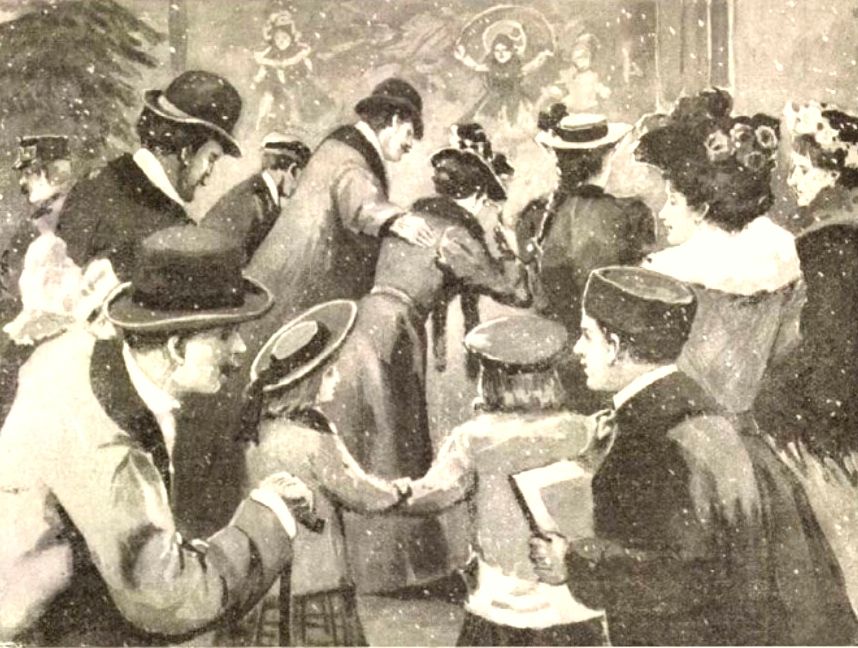
In the week of Christmas – A street in Budapest (Source: Vasárnapi Ujság, 21 December 1902)
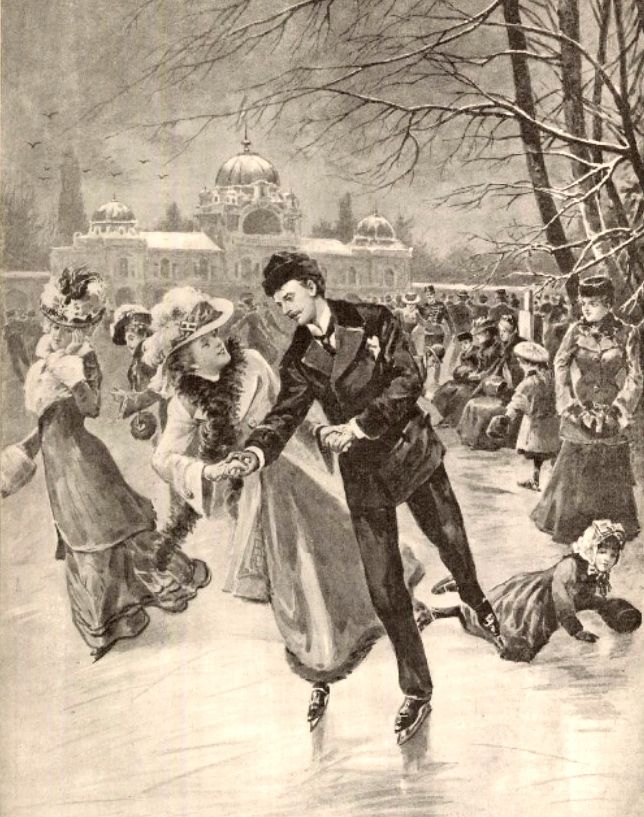
The Skating Rink in City Park (Source: Vasárnapi Ujság, 21 December 1902)
The first city Christmas in Pest was probably erected in the 1820s – mainly due to Countess Teréz Brunszvik. The Podmaniczky and Bezéredy families played an important part in affirming the new custom. The originally German custom of erecting Christmas trees spread rapidly in Hungary in the 19th century. By the middle of the 19th century, decorated Christmas trees appeared in the homes of the bourgeoisie. Erecting public trees later became commonplace.

Christmas Eve (Source: Vasárnapi Ujság, 24 December 1871)
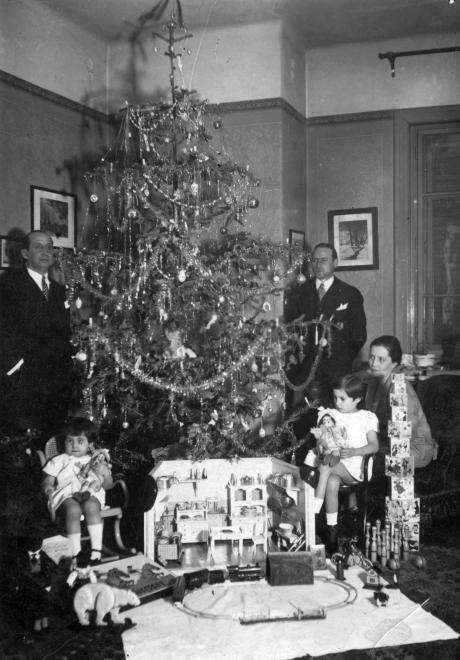
Dollhouse for girls, electric train for boys – Christmas gifts in 1930 (Photo: Fortepan/No.: 57916)
Nativity scenes have been built in Churches for a long time. "And offering their treasures, they gave him gifts: gold, frankincense, and myrrh," wrote Tolnai Világlapja in December 1935.
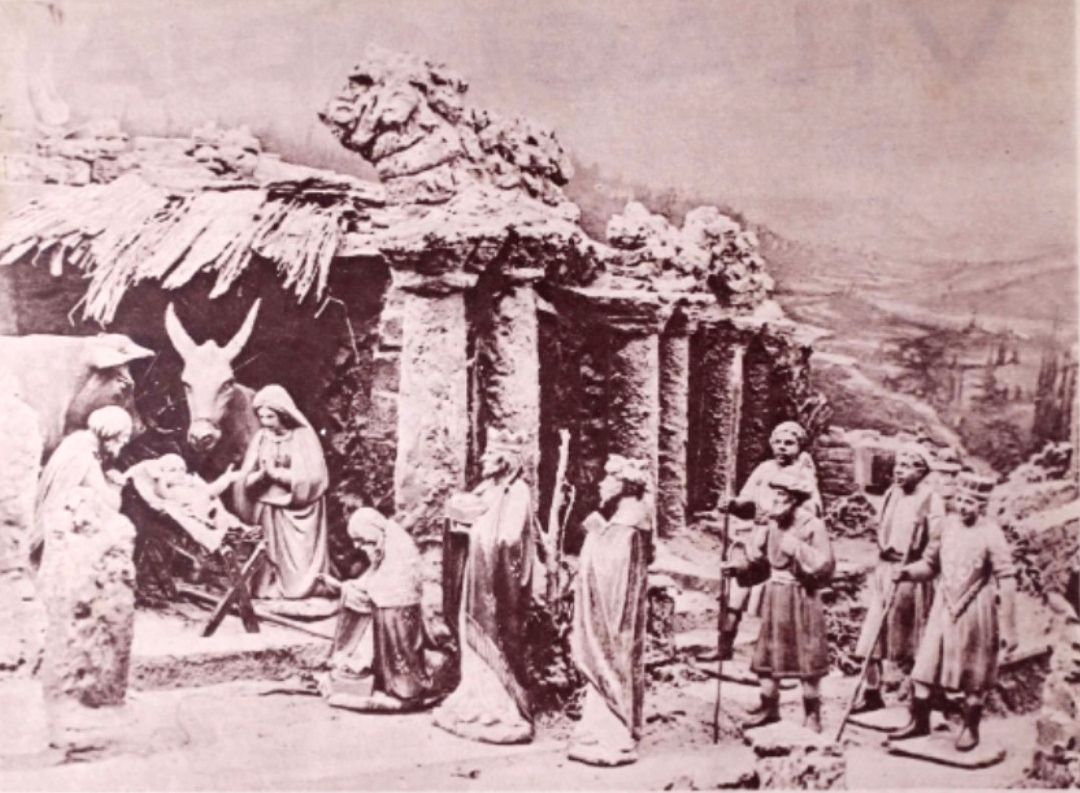
A group of Christmas sculptures in the Viziváros Parish Church (Tolnai Világlapja, 18 December 1935)
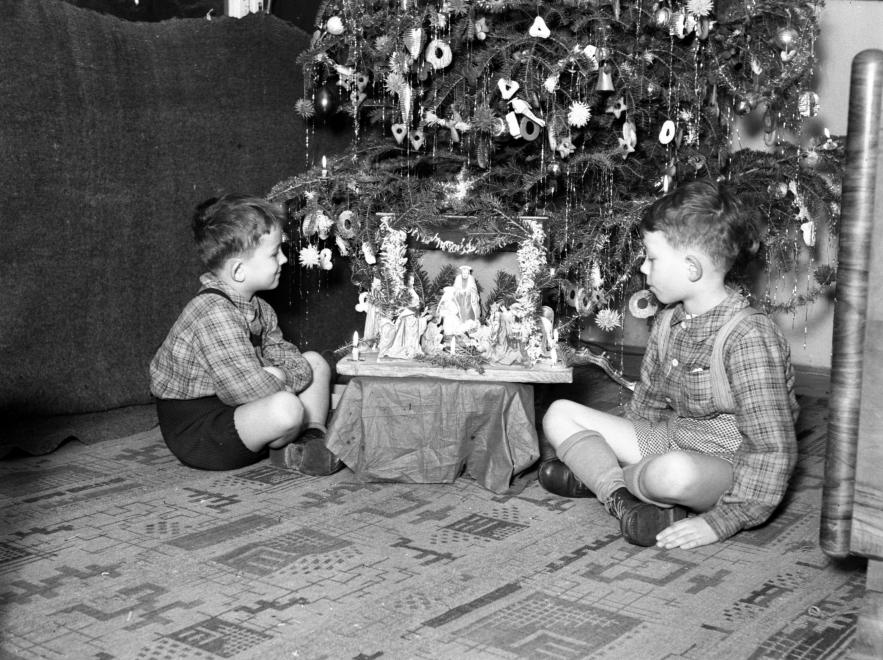
Nativity scene under a Christmas tree (15/a Kék Golyó Street, 12th District) in 1942 (Photo: Fortepan/No.: 72009)
Christmas tree markets have been held since the 1860s, especially on the banks of the Danube and major squares. Veritable pine groves sprouted throughout the city in the weeks before Christmas. “Pine groves are appearing in squares, markets, and on the streets. They stand green in the frost and snow. (...) The banks of the Danube are the densest pine grove in Budapest so far this Christmas. Thousands of trees and branches lined the riverbank and reached in the square before City Hall,” writes the 27 December 1897 issue of Vasárnapi Ujság.
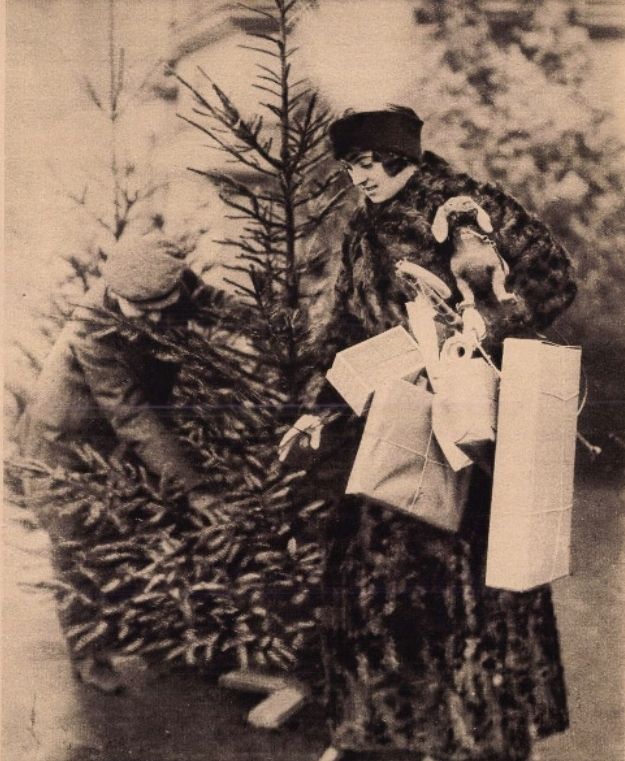
Christmas shopping in 1914 (Source:Érdekes Újság, 20 December 1914)
Erecting public Christmas trees spread through the country in the first decades of the 1900s. In its 28 December 1929, Képes Pesti Hirlap wrote: “In recent years, the beautiful foreign custom of erecting Christmas trees outdoors throughout the city has taken a foothold. One of these is »Everyone's Christmas tree« in front of the entrance to the National Museum, beautifully illuminated to celebrate the Holiday of Love.”

"Everyone's Christmas Tree" in front of the entrance to the National Museum in 1929 (Source: Képes Pesti Hirlap, 28 December 1929)
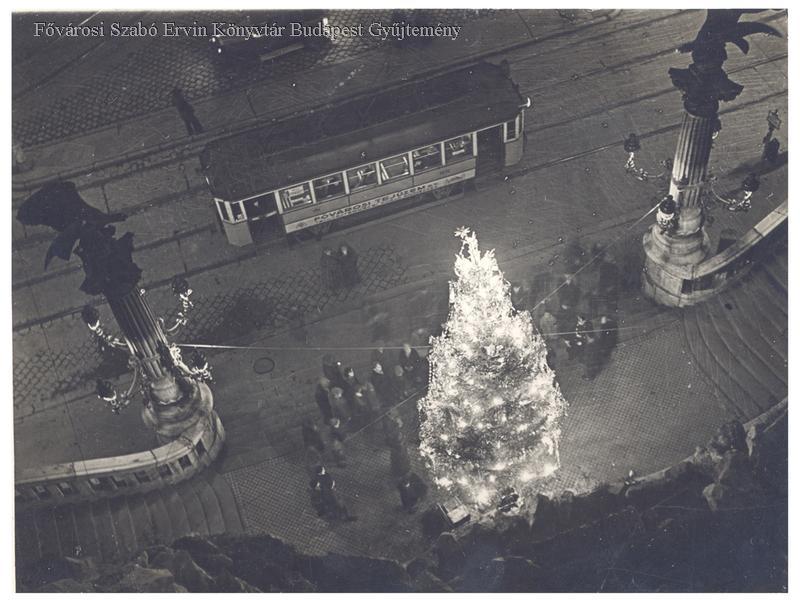
Everyone's Christmas tree under the St. Gellért Stairs in 1936 (Photo: FSZEK Budapest Collection)
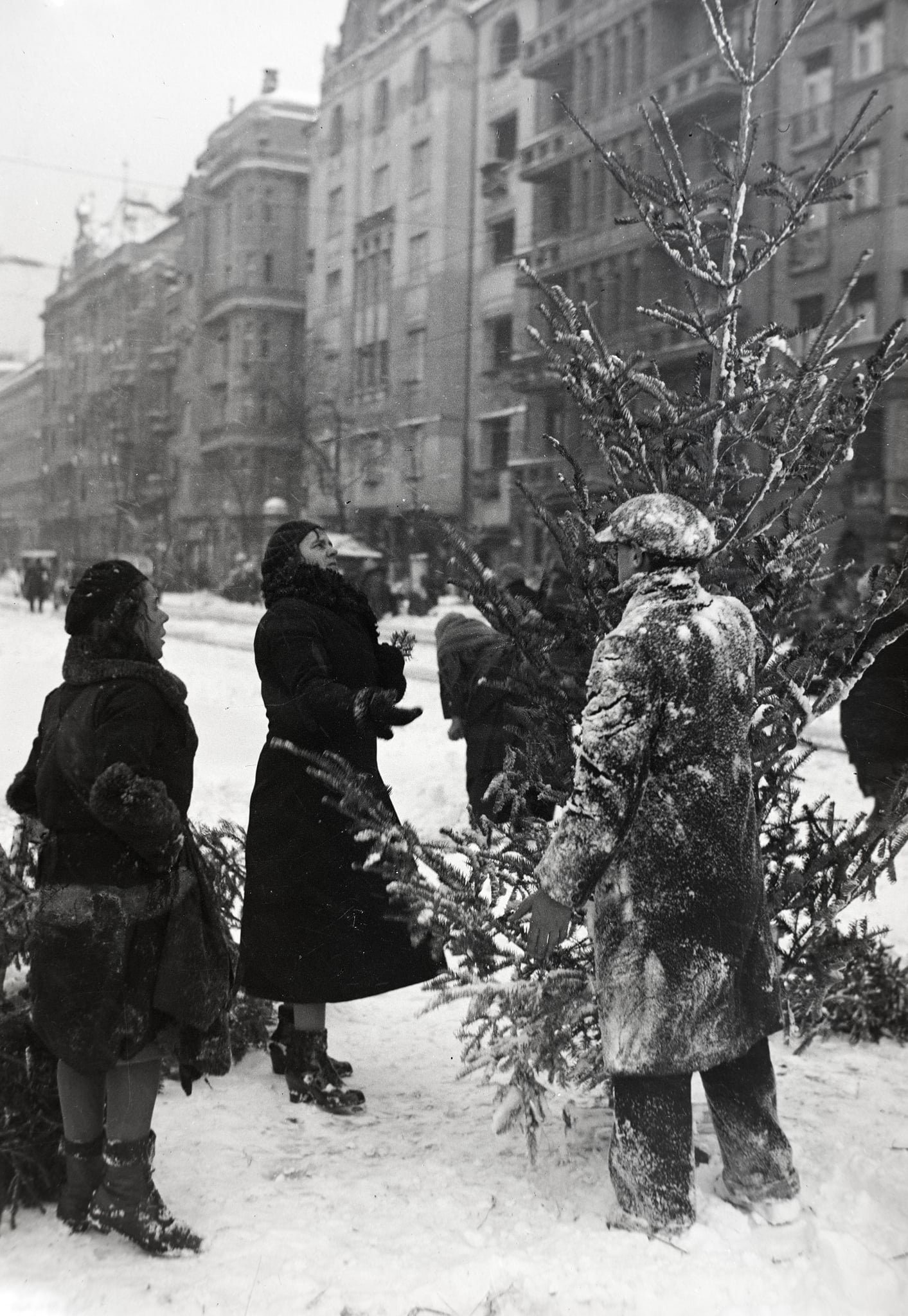
The Belgrade (Ferenc József) Embankment, in the background to the right the end of Sörház Street (Photo: Fortepan/No.: 177203)
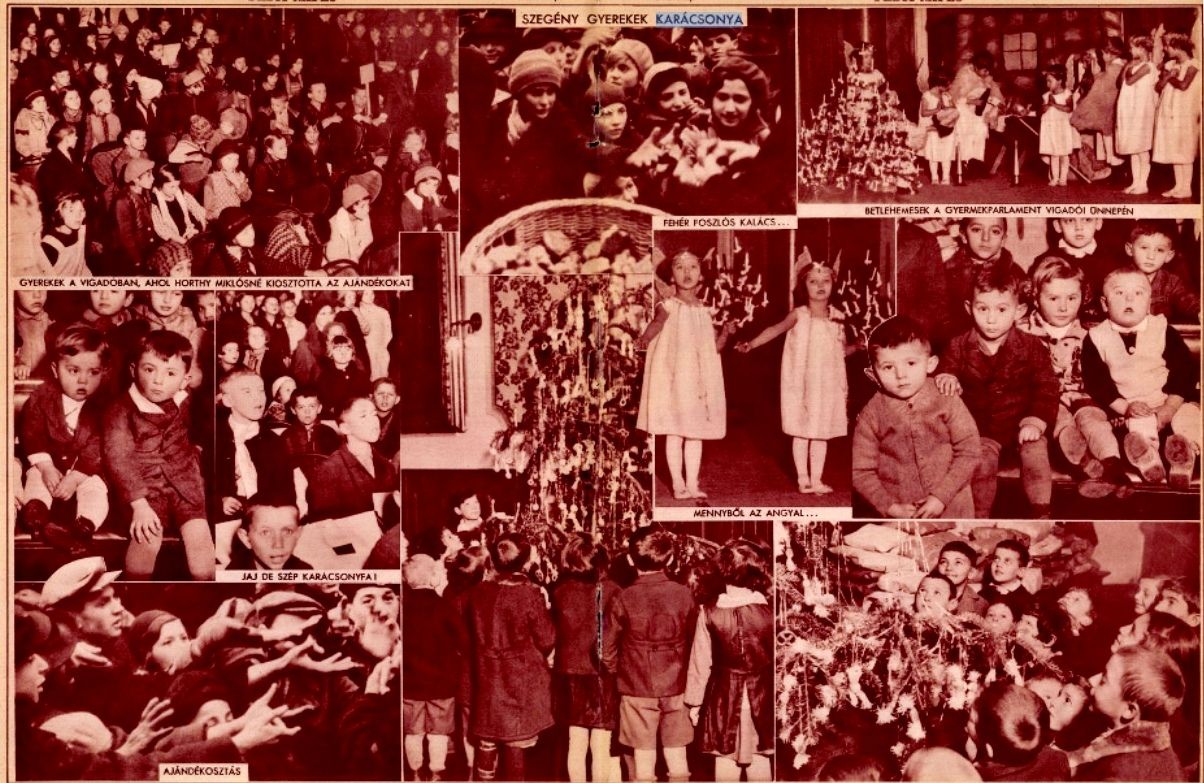
Christmas for Poor Children in 1932 (Picture Supplement of Pesti Napló, 1 January 1933)
Even 90 years ago, children were excited to see what surprises awaited them under the Christmas tree. “The floorboards of shops are being worn the most in these weeks. What should Baby Jesus bring for Christmas? A rocking horse for the little boy, a bike, or a small steam-powered toy? Be honest, tell your mum and dad, and the Christmas angel will take note of your wish in its Golden book and speaks to the Baby Jesus,” writes the 24 December 1933 issue of Pesti Napló.
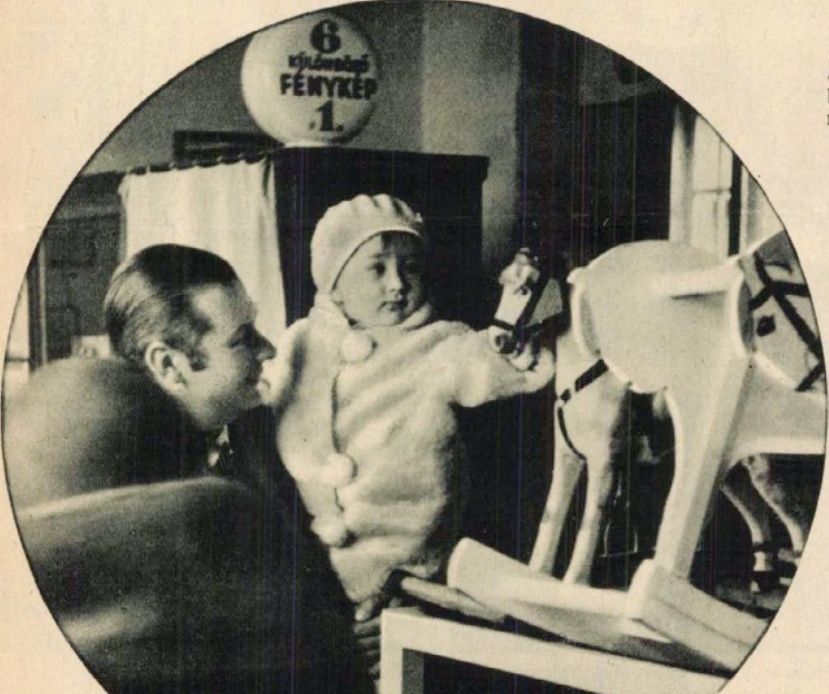
I want this rocking horse! (Pesti Napló, 24 December 1933)
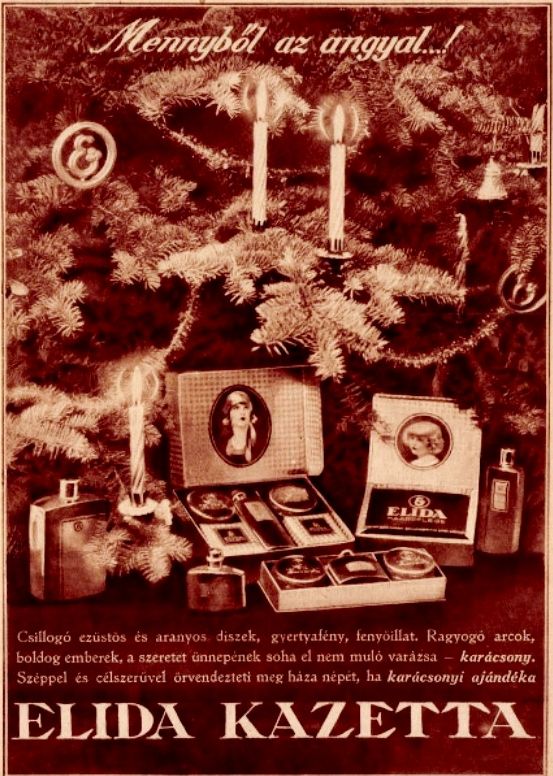
Contemporary advertisement offerings "beautiful and targeted" gifts (Source: Tolnai Világlapja, 21 December 1927)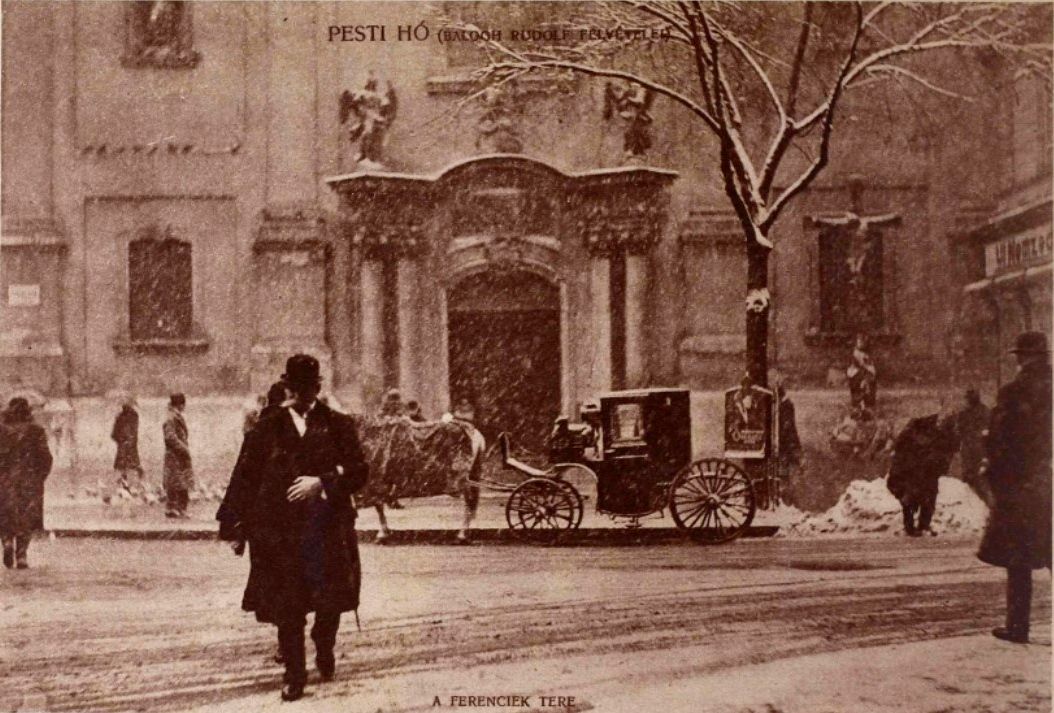
Snow in Pest on Ferenciek Square in 1927 (Picture Supplement of Pesti Napló, 18 December 1927)
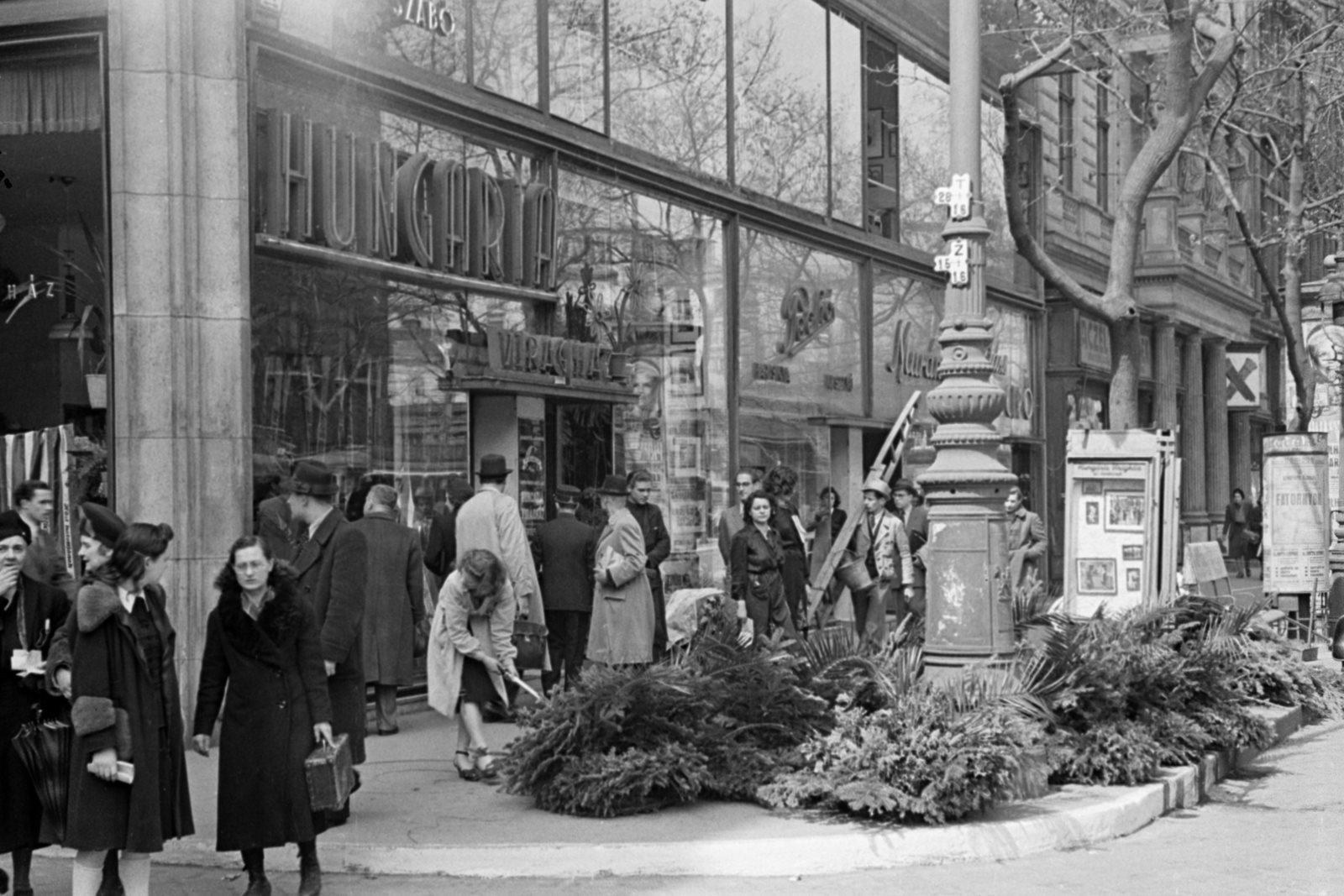 Christmas trees for sale in front of the Hungária Flower Shop (11 Múzeum Boulevard) in 1939 (Photo: Fortepan/No.: 180615)
Christmas trees for sale in front of the Hungária Flower Shop (11 Múzeum Boulevard) in 1939 (Photo: Fortepan/No.: 180615)
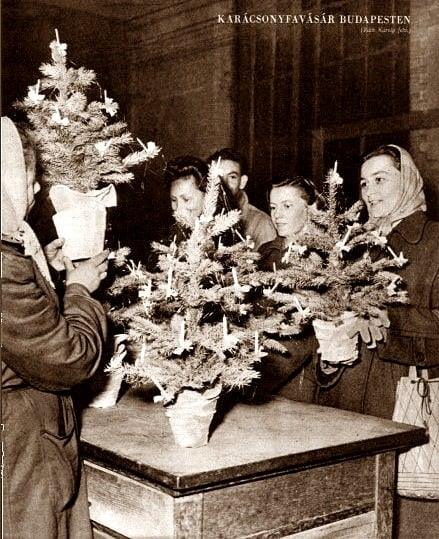
Christmas trees on sale in Budapest (Source: Béke és Szabadság, 15 December 1954)
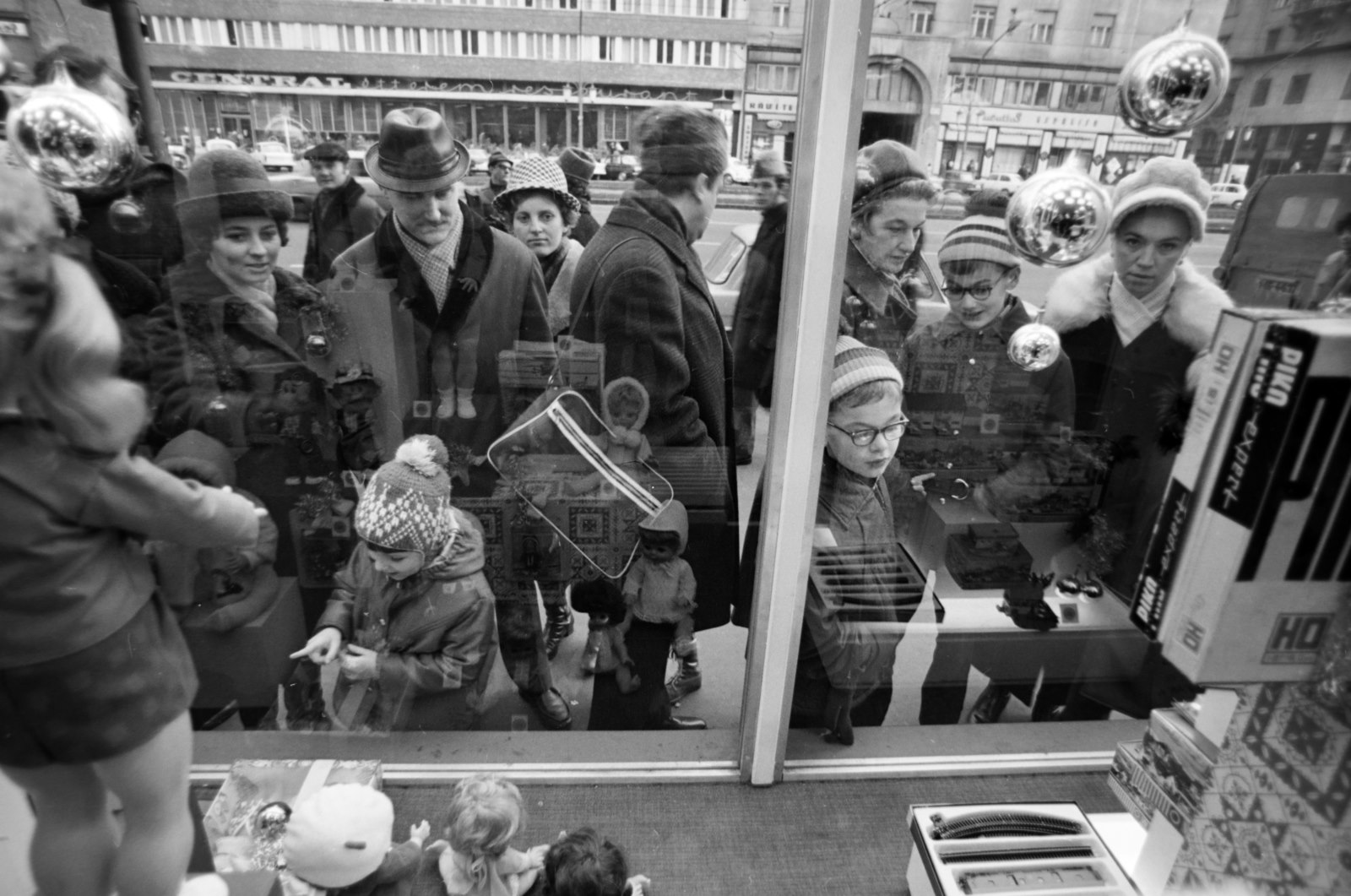 The shopof the Triál Sport-, Játék- és Hangszerkereskedelmi Vállalat ('Triál sports, toys and instrument shop) at 22–24 Tanács Boulevard
The shopof the Triál Sport-, Játék- és Hangszerkereskedelmi Vállalat ('Triál sports, toys and instrument shop) at 22–24 Tanács Boulevard
(today Károly Boulevard) in 1971 (Photo: Fortepan/No.: 198940)

Winter fair on Rákóczi Road in 1970 (Photo: Fortepan/No.: 21402)
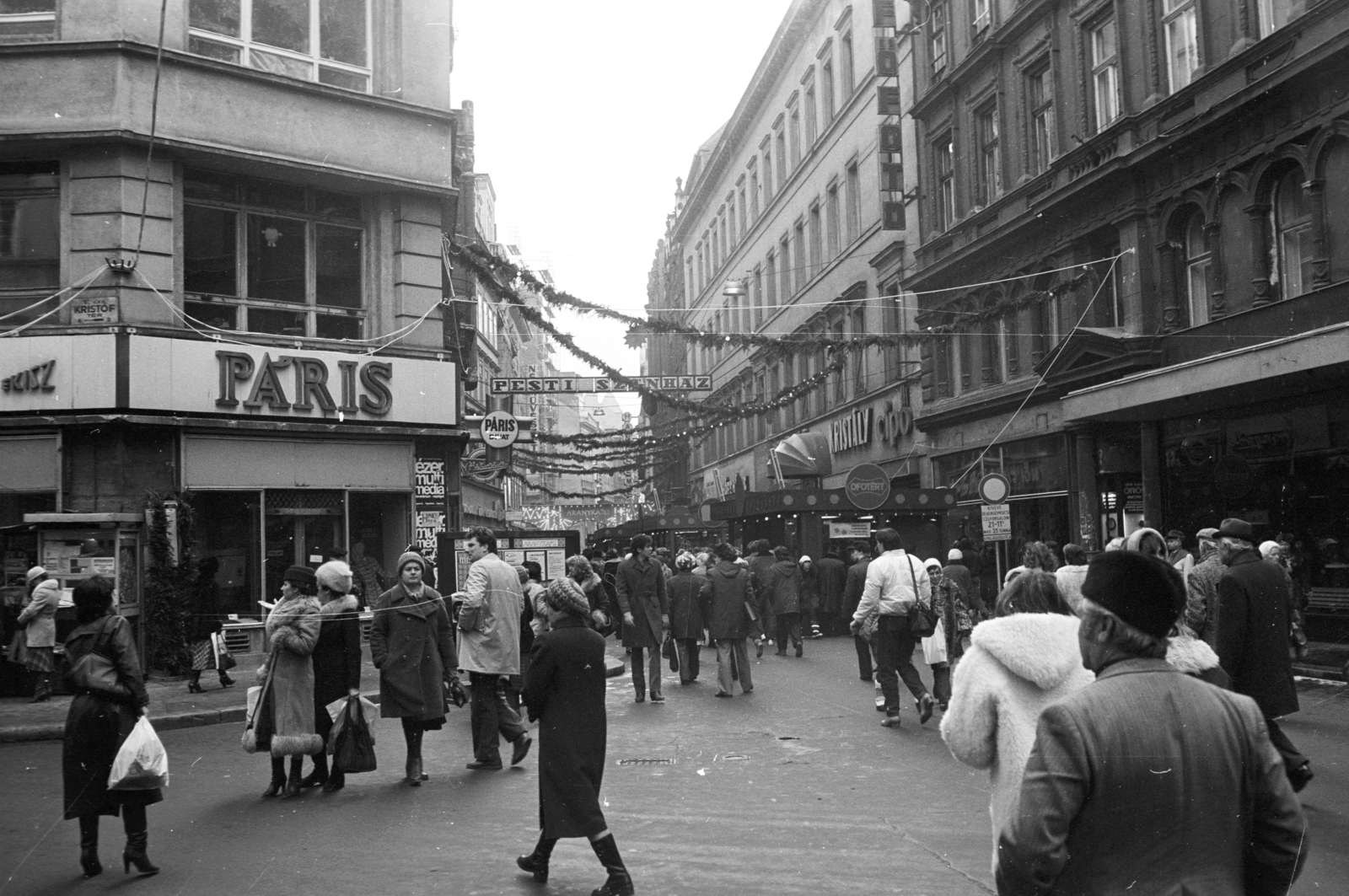 Heavy traffic in the city centre, on the corner of Kristóf Square and Váci Street, opposite the Aranykapu Christmas Market in 1981
Heavy traffic in the city centre, on the corner of Kristóf Square and Váci Street, opposite the Aranykapu Christmas Market in 1981
(Photo: Fortepan/No.: 192746)

Váci Street opposite Vörösmarty Square with the huge Christmas tree in 1985 (Photo: Fortepan/No.: 76081)
In 2020, the pandemic has changed celebrations. The experience is less outdoorsy. Skating rinks are closed, open-air Christmas fairs and concerts have been cancelled, theatres and cafés are closed. However, illuminated Budapest is still beautiful.
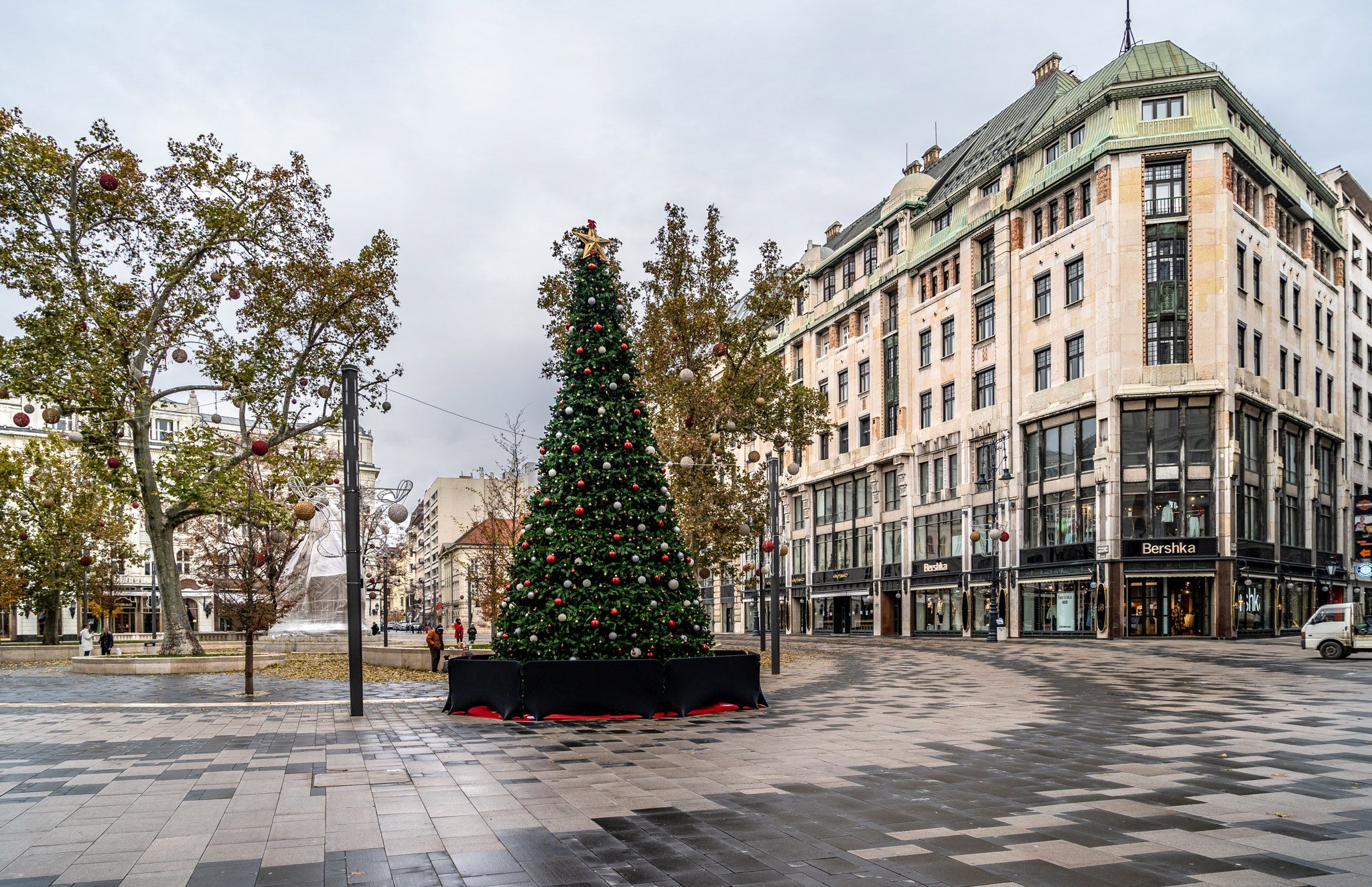
Christmas tree on the empty Vörösmarty Square in December 2020 (Photo: Both Balázs / pestbuda.hu)
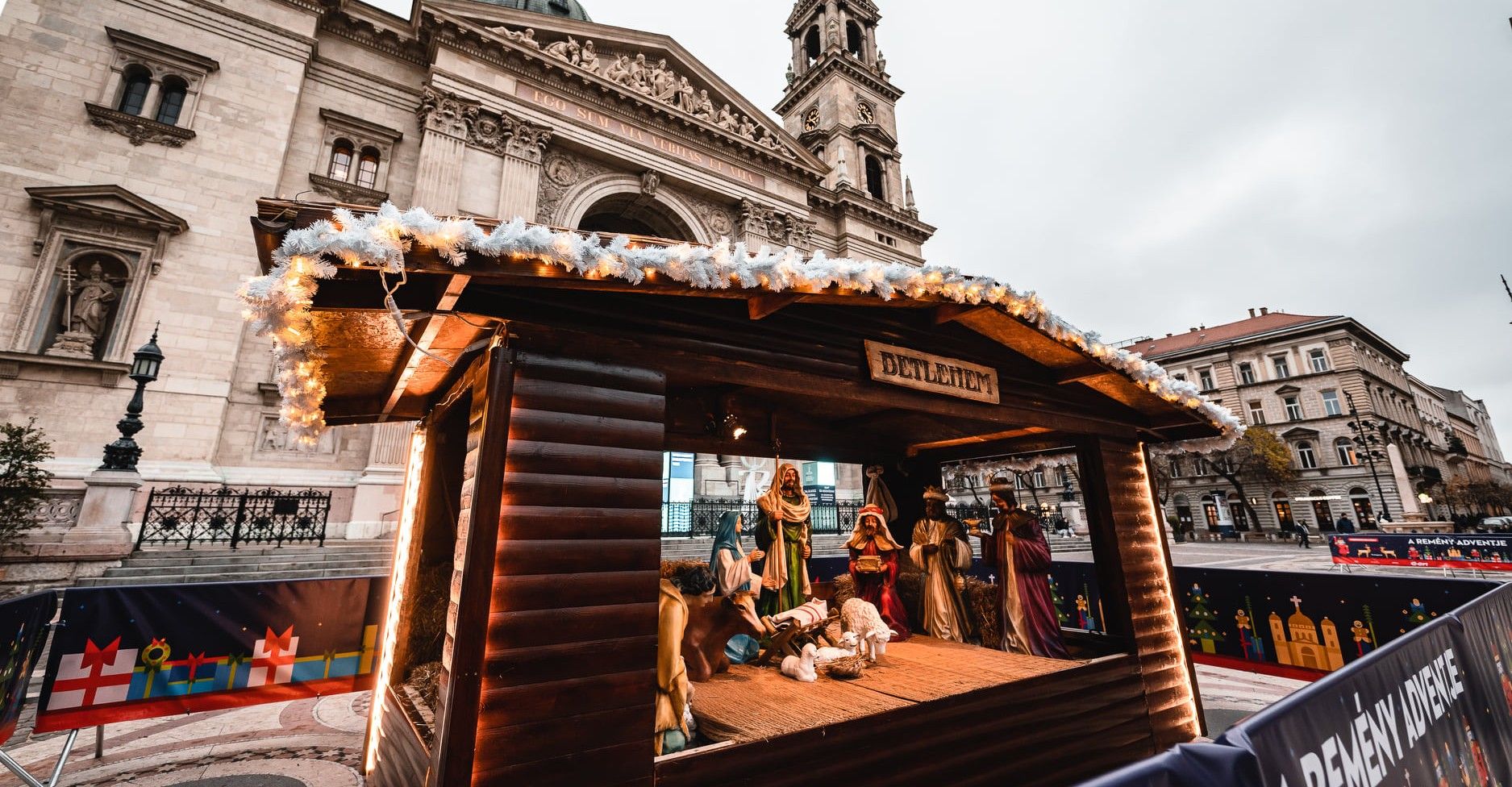
Nativity scene in front of St. Stephen's Basilica in December 2020 (Photo: adventbazilika.hu)
Cover photo: Christmas market on City Hall Square, the Inner City Parish Church in the background (Source: Vasárnapi Ujság, 21 December 1890)

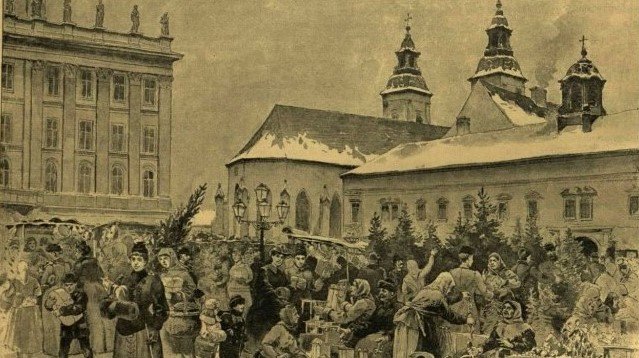

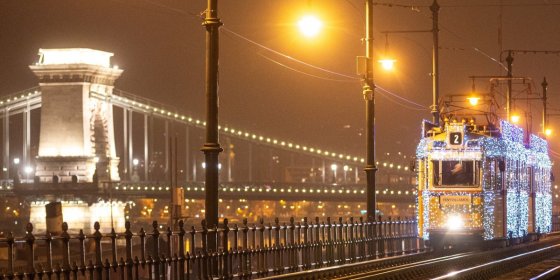

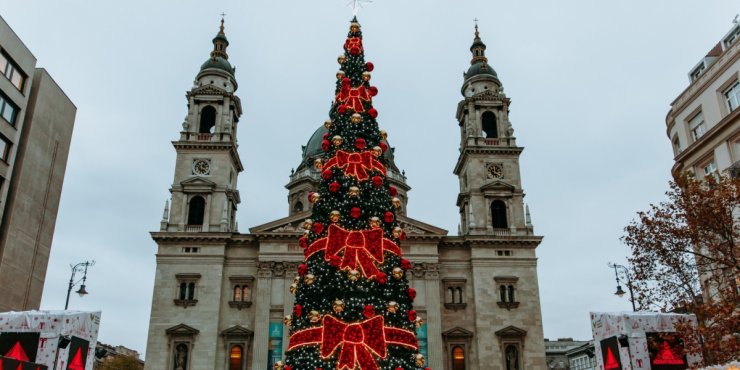

































Hozzászólások
Log in or register to comment!
Login Registration